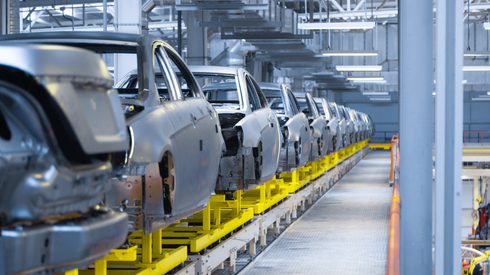By Amy Bennett, principal consultant for Fastmarkets Metal Bulletin Research
While debate persists around cathode chemistries, with LFP cathodes gaining ground in China in recent months at the expense of NCM cathodes, these various lithium-ion battery chemistries are all utilizing graphite anodes. In the coming years, exponential growth from the EV sector will propel the industry’s graphite requirement far above demand from the traditional consuming sectors, including the refractory industry, which is now the largest graphite-consuming sector.
Unlike other battery raw-material markets, notably lithium, where insufficient near-term supply is propelling prices higher, graphite supply is less of a challenge for the industry, which is reflected in largely stable price movements in 2021. Instead, the challenges for the graphite sector center on the relative advantages and disadvantages of synthetic graphite versus natural graphite.
Performance and life-span
From a performance perspective, EV automakers prefer synthetic graphite, citing its superior fast charge turnaround and battery longevity. EV automakers are targeting a 10-year battery lifespan, with synthetic graphite better suited to longevity. The manufactured nature of synthetic graphite also gives the material an advantage in terms of consistency of supply quality relative to natural graphite.
Cost concerns
Synthetic graphite, however, is costly, power intensive and environmentally unfriendly, with supply centered in China at odds with North American and European automakers’ desire for more localized supply. The supply-chain issues facing original equipment manufacturers (OEM) globally in response to the Covid-19 pandemic have starkly highlighted the need for localized supply of key materials, with the struggles of automakers amid the semi-conductor chip shortage indicative of the crisis.
Natural graphite enjoys a cost advantage relative to synthetic graphite, with natural graphite roughly half the cost of synthetic graphite. The increased use of silicon in anodes is still largely under development, but in future, if this technology is more widely adopted, natural graphite performs better than synthetic graphite with silicon in the anode.
Supply and the need for localization
Although natural graphite supply is also dominated by China, with approximately 62% of total supply in 2020, new natural graphite projects are more diverse, with numerous projects in Africa helping to diversify the supply base, and potential projects in North America and Europe helping to provide much-needed localization of supply to major automakers. Natural graphite lags behind synthetic graphite, however, in the key areas of performance and consistency.
Reflecting the rapid-demand growth forecast for the sector, both synthetic graphite and natural graphite will remain critical materials for anodes in the EV battery industry, with supply of both materials forecast to rise to meet surging demand from the EV sector.
The ability of graphite supply to rise with demand in the coming years will also help to keep prices less volatile than in other battery raw material markets and will protect the industry from substitution by competing anode technologies in the longer term.
This article, by Amy Bennett, was first published to metalbulletin.com on Wednesday October 6.
For the latest insights into the energy transition market, visit our dedicated hub for regular price analysis, news and expert outlooks.





